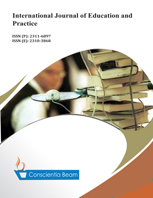Student Decision-Making Processes as Evaluated by Students, Administrators, and Lecturers
DOI:
https://doi.org/10.18488/61.v10i4.3221Abstract
Modern society is undergoing numerous rapid changes, which include both opportunities and challenges for individuals of all ages. In this environment, young people, particularly students, are frequently confronted with situations that need them to choose and make decisions. The primary goal of this study was to (i) investigate variations in students' attitudes toward decision-making processes based on gender and school year. (ii) Students, administrators, and lecturers assess the students' own steps in putting decision-making into practice. A sample of 697 students and 120 administrators and lecturers were chosen from six school universities using the random sampling technique. Our research yielded the following results: (1) There is a statistically significant difference in male and female attitudes toward decision-making; and (2) there is a statistically significant difference in freshmen's and seniors' attitudes toward decision-making. Steps in student decision-making include: First, pupils decide to identify the issue. Next, they select the optimal solution. Step three is to make a list of potential possibilities. In the next stage, they collect the necessary information about the problem. Finally, students analyze each plan. This study implies that students, administrators, and lecturers rate students' decision-making processes equally.





